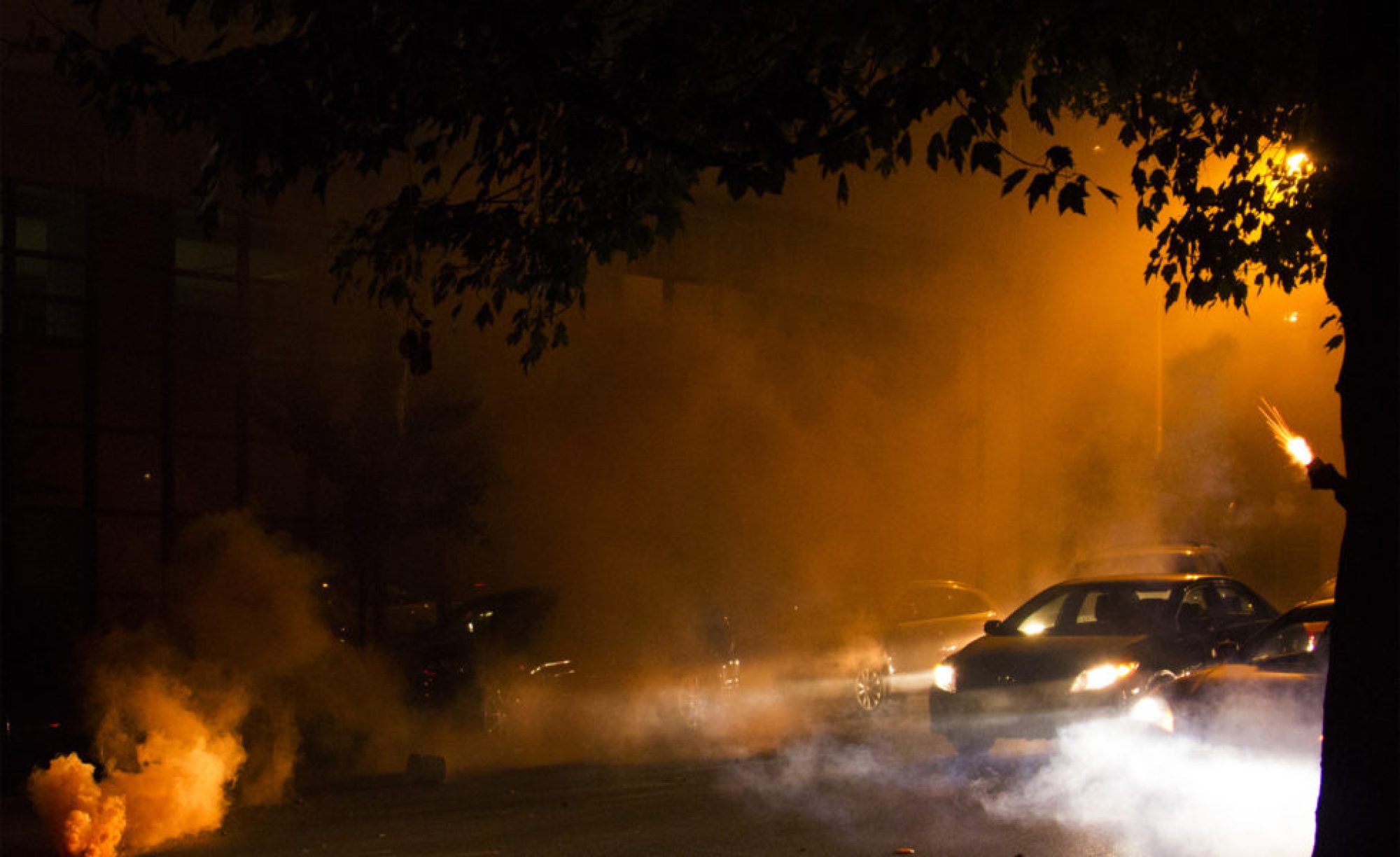we receive and transmit:
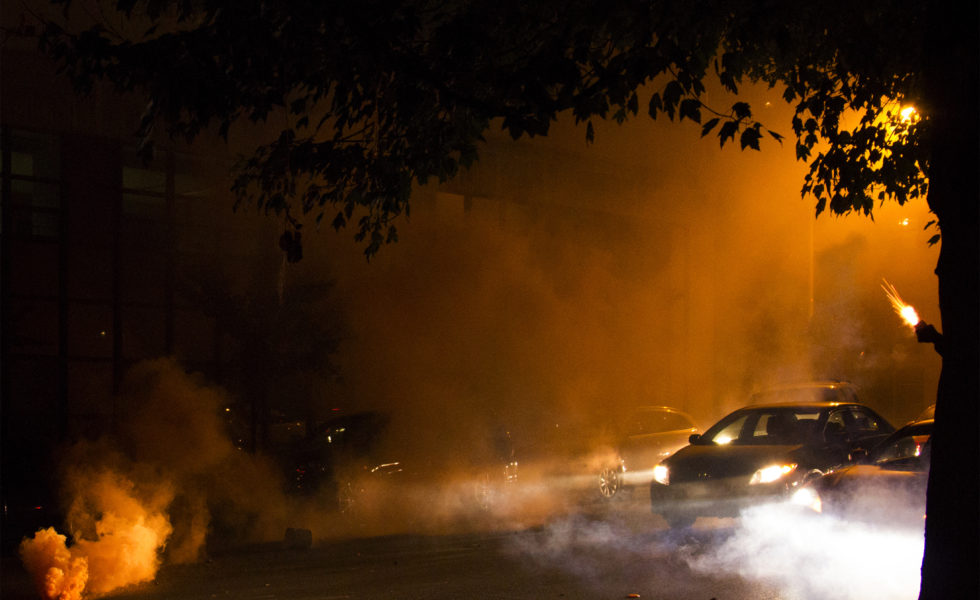
On September 9 2016, prisoners took action in 46 prisons for a nationally-coordinated prisoner strike. Of those facilities, 31 experienced a lock-down, suspension, or full strike for at least 24 hours, affecting around 57,000 people. By not showing up for work, prisoners shut down the regular operations of prisons like Kinross in Michigan and Holman in Alabama. By rioting and through other combative tactics, they disrupted normalized routines and operations for even longer. It was the largest action ever taken by prisoners in the United States, and anarchists took part both inside and outside the prison walls.
The strike has primarily been framed as a battle against prison slavery, an institution codified into law “as a punishment for crime” in the 13th Amendment to the Constitution. Prisoners are often employed for pennies an hour, performing not only the various tasks that keep the prison running, but sometimes producing commodities such as Starbucks cups or even putting out wildfires in California. No doubt, people participated in the strike for a variety of reasons, but the element of prison slavery was the narrative that stuck.
In Bloomington and elsewhere, anarchists helped lay down the infrastructure of the strike for a year prior to September’s actions, longer if you consider informal prisoner support and solidarity projects anarchists have been regularly engaging in. We’ve created free zine distros and started correspondences with prisoners directly, organized conferences to facilitate our activities, spread the call for the strike to prisons nation-wide, put up flyers and posters about the strike throughout the cities where we live, and come to the aid of prisoners facing retaliatory repression.
Anarchism is the idea that authority and systems of control are not only unnecessary, but that life would be much better without them. Prison is the embodiment of domination, and anarchists throughout history have attacked prisons, liberated comrades, and during revolutionary situations completely flung open their gates.
During the Russian Revolution of 1917-1921 the anarchist “Revolutionary Insurrection Army” in Ukraine, composed entirely of volunteers, sometimes opened the prison doors and blew up police stations once they liberated an area. The Iron Column, an anarchist militia formed during the Spanish Civil War in 1936, liberated prisoners from San Miguel de los Reyes prison, and prisoners would later join the Column in its defense of the Revolution from Communist and fascist forces. As recently as February 23, 2016 anarchist Pola Roupa hijacked a helicopter in an attempt to free her comrade Nikos Maziotis and other prisoners from Koridallos prison in Greece.
In short, anarchists hate prisons, and a number of us devoted considerable time and energy to the prison strike.
When September 2016 began, anarchists in Bloomington organized open assemblies to facilitate the planning of actions in solidarity with the strike. We did not want to recreate the tedium and bureaucracy of Occupy, where every decision had to go through the bottleneck of a General Assembly’s consensus. Instead, these assemblies were spaces where anyone could make a proposal for an action, and if other people attending wanted to participate they would then simply collaborate to do so. Discussion would happen regarding the proposals, but there was no decision-making body of any kind. This is an anarchy that rejects not only leaders and bosses, but the tyranny of the majority and the populist absurdity of large-group consensus.
These assemblies took place daily around the days of September 9, and a number of actions throughout Bloomington directly resulted from them.
Strike Solidarity, Day 1: Democratic Party Campaign HQ disrupted
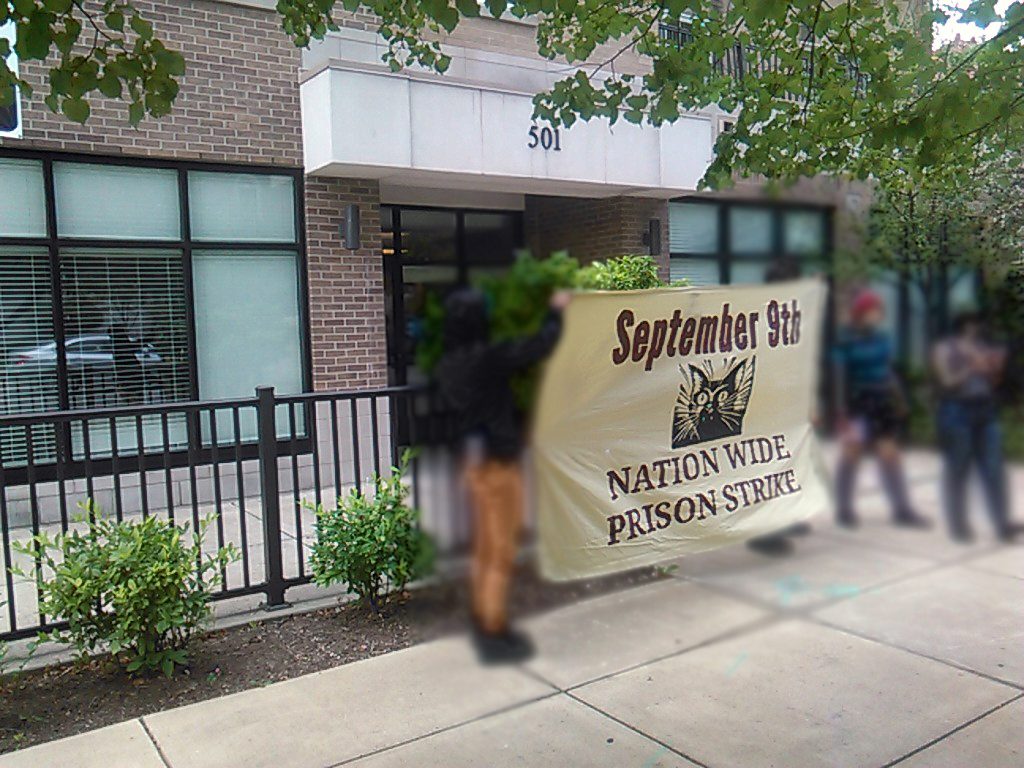
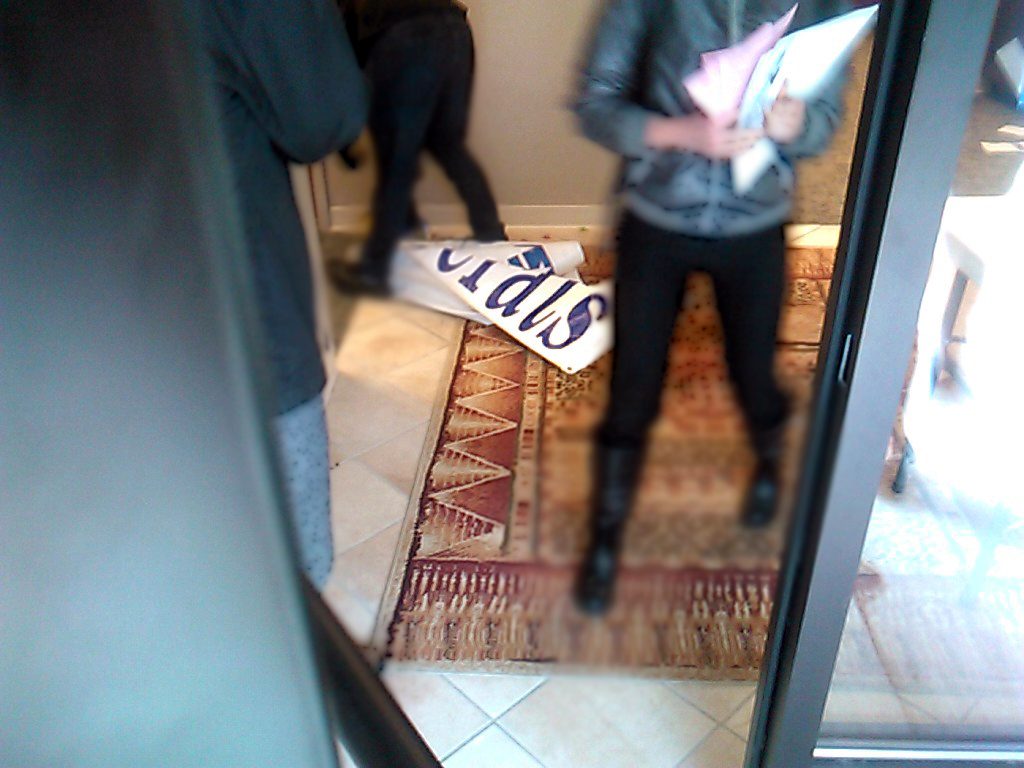
On September 8th, about a dozen people disrupted activities at the local Democratic Party campaign headquarters, the ruling party at the time. Standing outside the building, people held a large banner announcing the prisoner strike while a statement was read and others passed out handbills. Additionally, a group of people went inside the headquarters to yell chants, clog sinks, tear down campaign posters, and scatter handbills. An American flag in the office found its way into a toilet. People walked away from the building tossing handbills in the air. From the handbill scattered at the action:
As the ruling party, the Democrats and their Bureau of Prisons are responsible for the conditions in federal prisons and everyone being held hostage inside of them. They profit from the labor of prisoners and contract with countless companies and industries that do the same, while prisoners earn as little as a few cents per hour.
They are responsible for the exorbitant prices of phone calls, commissary foods, and other basic necessities in prison. For the mailroom censorship, both institutionalized and arbitrary, of political and other materials. They are responsible for the poor quality of water and food that some must endure for decades, or even the rest of their lives. And for the dismal or nonexistent health care for prisoners when these conditions start to take their toll.
The Democrats and their Department of “Justice” (DOJ) are responsible for overseeing similar and or worse regimes in state prisons systems. They are complicit with the abuse, exploitation, and terror that happens on their watch and with their consent.
The Democrats and their Immigration & Customs Enforcement (ICE) are responsible for tearing apart millions of families through raids, arrests, indefinite detentions, and ultimately deportations.
State and County Democrats are responsible for approving and funding the construction of additional compounds for keeping people locked in cages and pens, with the latest technology for ever tighter security and control.
Here in Bloomington, the jail is currently building a new structure to house more prisoncrats and create more holding cells for prisoners.
Bloomington Democrats have blood on their hands. One of this year’s democratic candidates for sheriff was Steve Sharp, who was present when the BPD killed a black man, Denver Smith, during an episode of mental distress in September of 1983. In May, Sharp was defeated by the current sheriff, Brad Swain. It is under Swain’s command that Clinton “Boo” Gilkie died of medical neglect in the Monroe County Jail on June 7th, 2016, preceded and followed by an alarming number of suicide attempts.
Because of this, we don’t trust the Democrats, or any political party or regime. Their talk of reforms, purposeful incarceration, and a well-meaning rehabilitative carceral system mean little to us. We have no interest in soft policing; it is because of the social arrangements they maintain that people commit crimes of poverty and desperation. We have no interest in their framing of guilt and innocence; it isn’t only our wrongfully-convicted friends who we want back. And we have no interest in their discourse of “abolition”; imprisonment in our own homes by expensive technology around our ankles and constant state supervision is still imprisonment.
To be clear, we don’t expect the Democrats to solve anything. Where they have the power—and we know they have it—the only respectable thing to do would be to meet any demands of prisoners who are on strike and engaging in other forms of resistance and make sure prison administrations cannot bury, silence or torture them. If they are serious about prison reform and the well-being of prisoners, we can think of few small ways they could show it. We know every Democratic office has the capacity for call centers, media manipulation, and mass mailings. And we know a lot of prisoners that could use supportive call-ins, attention on their stories and struggles, and some new reading material…But we don’t expect much from the ruling party that maintains an oppressive society held together by the threat and imposition of policing and imprisonment.
To illustrate what we’re dealing with here: remember when the DOJ made a big spectacle and gave itself a giant pat on the back for cutting ties with private prisons? That applies to only 13 facilities across the country. Yes, 13. It says nothing about those ran by the Department of Homeland Security, including hundreds of immigrant detention facilities. Hopefully that means slightly less miserable lives for the thousands of people locked inside those 13 facilities, but government-run prisons are no more acceptable. A prison is prison, whether the COs are paid by GEO Group or the Indiana Department of Corrections.
The Democrats, those who follow their orders, and the suffocating world they perpetuate are locking up our friends, families, and those who inspire us by continuing to fight for themselves and each other, for freedom. It is clear which side they are on.
Down with the rulers.
Away with every prison.
Strength to those on strike.
Power to prison rebels.
The action was reported in the Herald Times without printing any part of the handbill’s text, even though they doubtless had access to it on account of the hundreds of copies scattered inside and outside of the building.
Strike Solidarity, Day 2: Microphone Demonstration
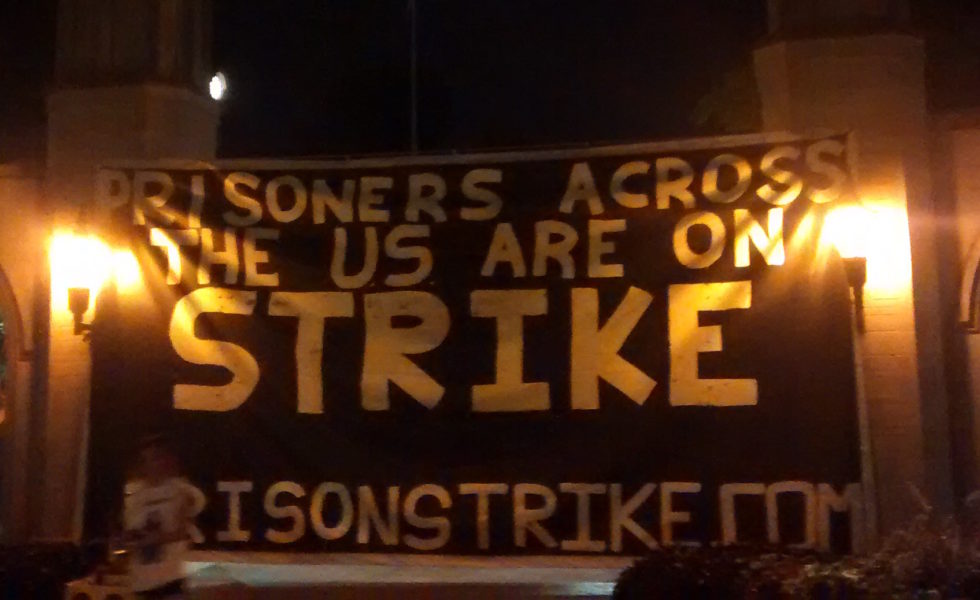
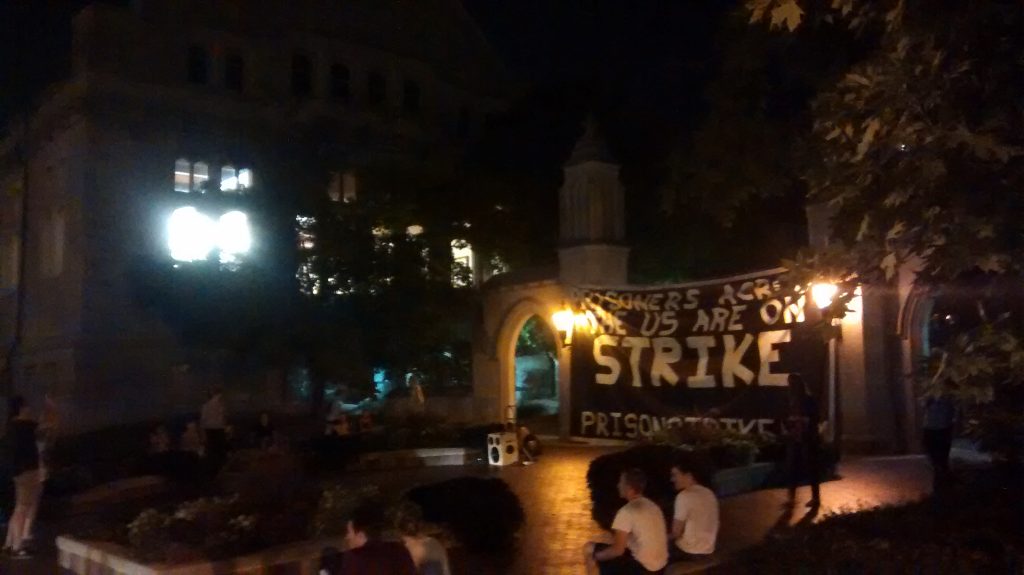
On the first day of the strike, September 9, 2016, anarchists hosted a microphone demo at Indiana University’s Sample Gates.
A large banner that reads “PRISONERS ACROSS THE U.S. ARE ON STRIKE – Prisonstrike.com” was raised in the middle of the campus gateway. Using a speaker system, participants read aloud Chelsea Manning’s hunger strike statement and Free Alabama Movement’s “Let the Crops Rot in the Fields.” Sean Swain’s 9/9 statement from The Final Straw radio show and a segment from Crimethinc podcast about the history of prisoner resistance were also played.
People passed out handbills and had conversations with pedestrians and curious people who stopped to listen or ask what was going on. The demo lasted about an hour.
Strike Solidarity, Day 3: Noise Demonstration
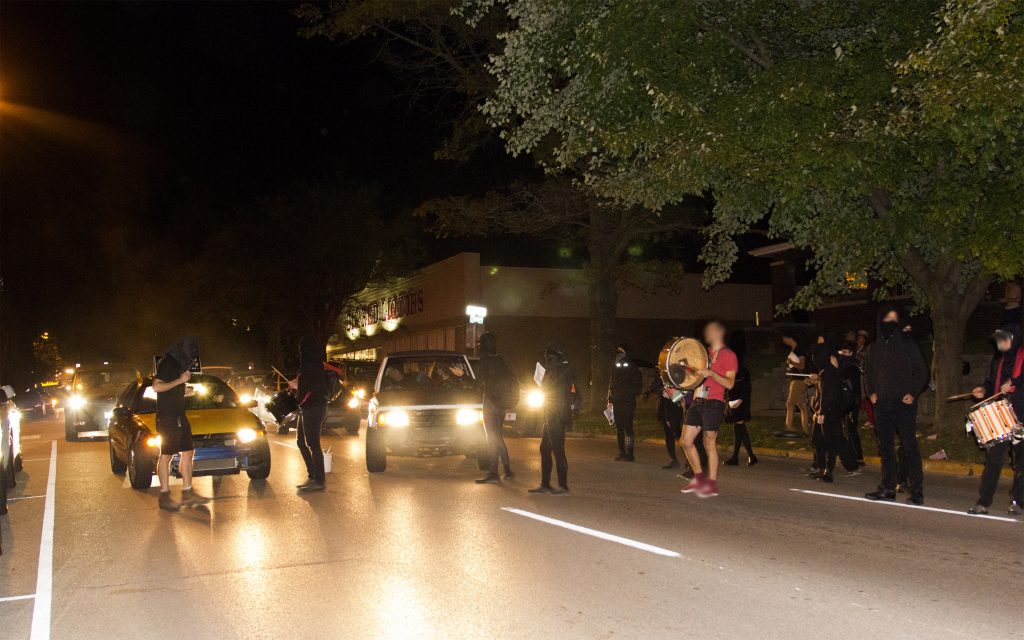
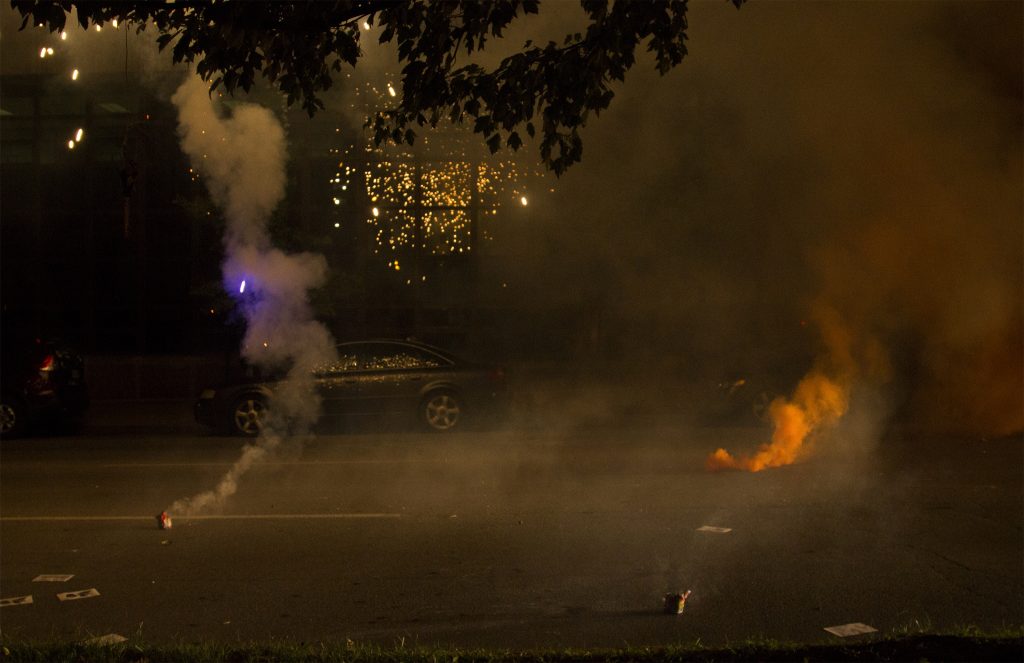
On September 10, about 30 people staged a noise demonstration outside of the county jail in solidarity with those locked up inside, as well as the 9/9 strikers. Noise was made, smoke-flares set off, and fireworks lit, illuminating the air as chants echoed off the walls in tandem with the honking horns of the blocked traffic. 800 flyers advocating solidarity with striking prisoners and condemning prison slavery were both strewn about and passed to curious passersby/motorists. We held the space outside the jail and completely blockaded the street for half an hour. Eventually we scattered and, as of this posting, no arrests have been made for this disruption.
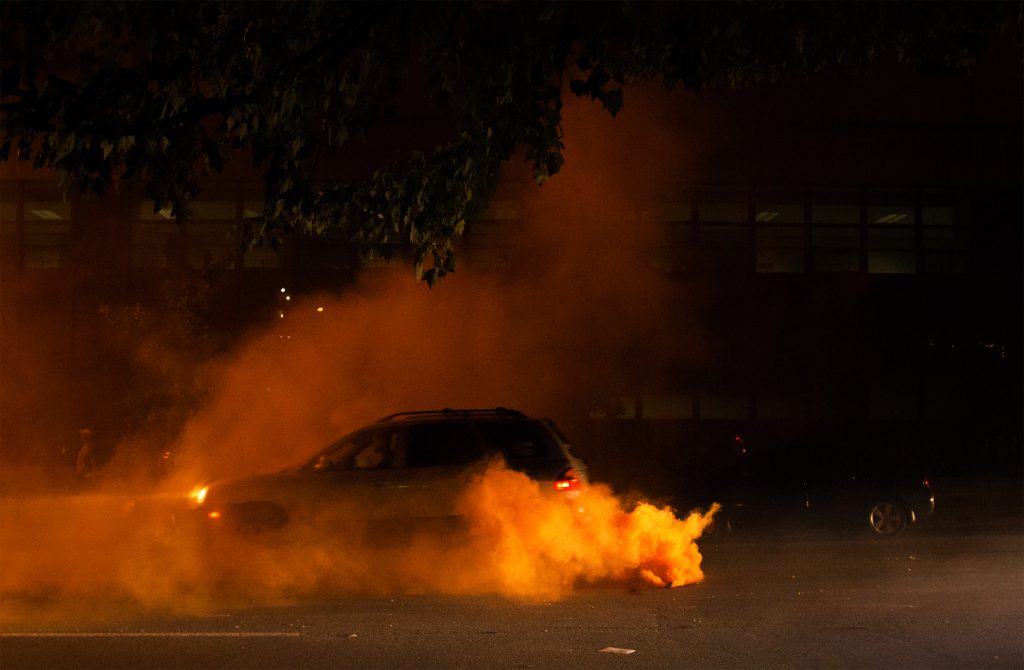
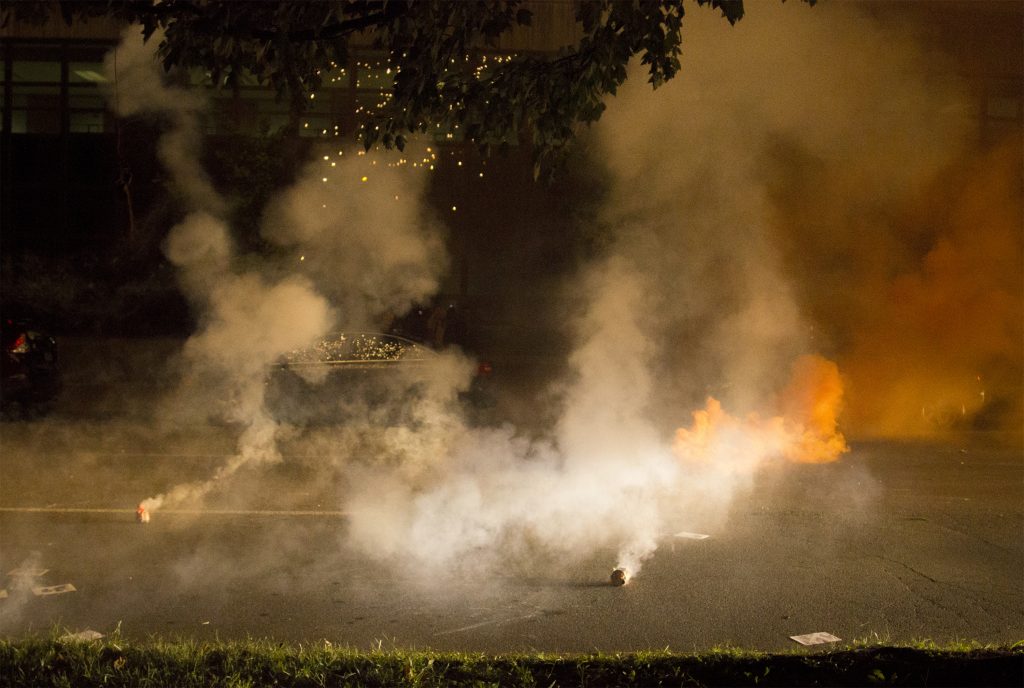
Noise demos are a staple of anarchist action in recent years. Part of the logic of imprisonment is to isolate people from those outside of the prison walls. This makes it easier for prison officials to do anything to those locked up in their prisons without any reprisals or repercussions. All the abuses and misery taking place inside of prisons are kept out of sight and thus out of mind for the rest of society, or at least for those lucky enough to not have a loved one locked up. Partially in response to this, anarchists and others have established the tradition of converging outside of a prison or jail with the purpose of making a bunch of noise, launching fireworks, and holding banners so that those locked up know they are not forgotten.
Reflections
A recent thread in anarchist thought is that the logic of control and domination embodied in prison is becoming increasingly present throughout all of society. Surveillance cameras on every corner, more cops with scarier weapons, insidious “community police” operations, NSA spying, facial recognition software, and the algorithms of information technology all increase the power of the state and corporations in ensuring our paranoid obedience. Clearly, we have these and many other reasons for resistance, and the actions taken by anarchists outside the prison walls should be read not as an act of charitable support for the miserable victims of prison, but as solidarity from people also fighting against systems of control.
That said, the apparatus of prison is spreading in less metaphorical ways as well. With both conservative fiscal worries about balancing budgets and liberal concern over mass incarcerating non-violent drug offenders, the impetus for prison reform is in the air. But capitalism is an unstable system and needs a strong state to protect the normal rhythms of daily life that allows capital to reproduce itself. We may see a future with fewer physical prisons as we know them now, but replacing them an expansion of probation and ankle monitors confining people to house arrest. The control and domination of prison would disperse and decentralize throughout the society, if anything strengthening the capitalist system by setting increasing precedents and legitimization for monitoring and controlling populations. While it would be lovely to see the prisons set ablaze, we must be careful not to help usher in a new, and much more insidious regime of social control.
It is certainly true that the prisoner struggle in early September was a strike against a system of slavery. But to frame the entire strike in that way is an oversimplification that flattens the diverse experiences and motivations of prisoners who took action that day. To reduce struggle against prison as primarily a withdrawal of labor is to elevate the exploitation of capital over the domination and control that directly immiserates prisoners lives regardless of whether they work. During the build-up to the strike, the narrative of a “prisoner class” withdrawing their labor clearly rose in focus over other forms of action. This seems to be reading the specific situation of prisoners through the lens of the Old Left class struggle perspective, which is ill-suited to seeing anything except the wage relation between worker and capital. In this case, and in many others as traditional forms of work break down, it doesn’t fit.
The days surrounding the strike saw a surge in actions taken by anarchists in solidarity. Besides the Standing Rock NODAPL resistance, it seemed to be all that anarchists were focused on in the United States. But with the election of Donald Trump and an increasing focus on the Alt-Right, it appears that most anarchists have moved on to Antifa (anti-fascist) activities. Without comment on that terrain of action, it feels as if anarchists have a very short attention span, constantly moving between movements and struggles. But lacking an anarchist project of our own, does that just make us insurrectionary ambulance chasers?
The Future
Repression is still coming down on prison rebels as a result of their participation in the strike. For months anarchists in Bloomington have been hosting letter writing nights, call-ins, and fundraising efforts to support prisoners who have been retaliated against. On the last Monday of every month Bloomington Anarchist Black Cross hosts “Cage Flight” at Boxcar Books in order to discuss ongoing prisoner struggles and to write letters and cards to prisoners.
Do prison rebels feel emboldened and ready to take action again? Have they changed the seemingly apolitical climate inside the prisons? What impact and (anti-)politicization has this action had on the families of those who participated? Has the regime of race and gang barriers that keep prisoners from uniting against administrators been disturbed? What could we, anarchists outside the prison walls, have done better? What the consequences of the prisoner strike will be are unknown, and may not be known to us outside the prison walls for years to come. What seems clear, however, is that if we are to see an end to prison and its world, we have to continue our efforts in solidarity with prison rebels and against the entirety of prison society.
Further reading
Herald Times article on strike solidarity action – http://www.heraldtimesonline.com/news/local/activists-vandalize-monroe-democrats-new-headquarters/article_81e2fbc0-4e1e-5c75-9368-8c0a1dff6b50.html
Bloomington Anarchist Black Cross – https://bloomingtonabc.noblogs.org/
Detailed timeline of prison strike, Sept 9 – Oct 17, 2016: http://maskmagazine.com/the-prisoner-issue/struggle/live-updates-prisoner-strike
